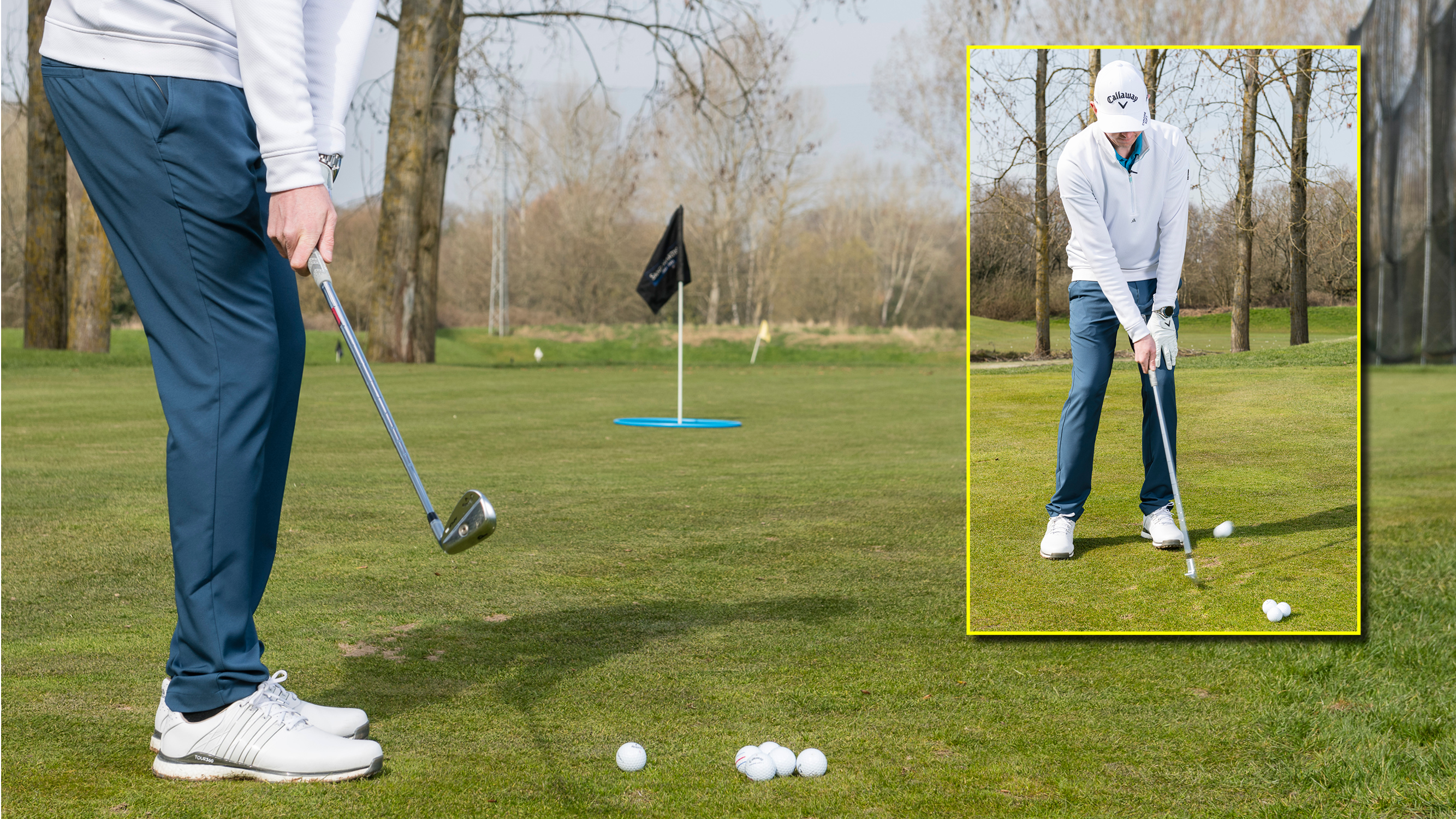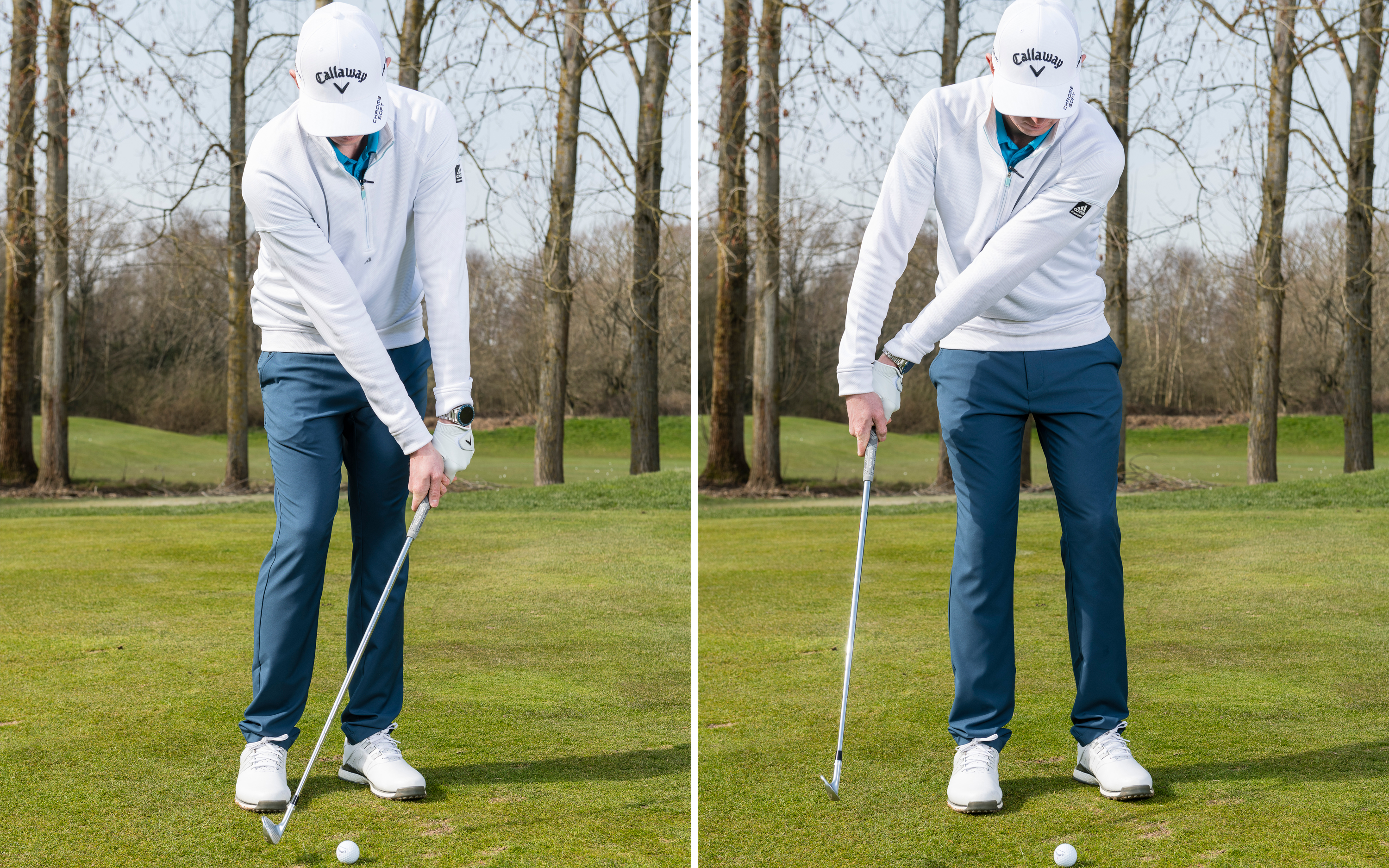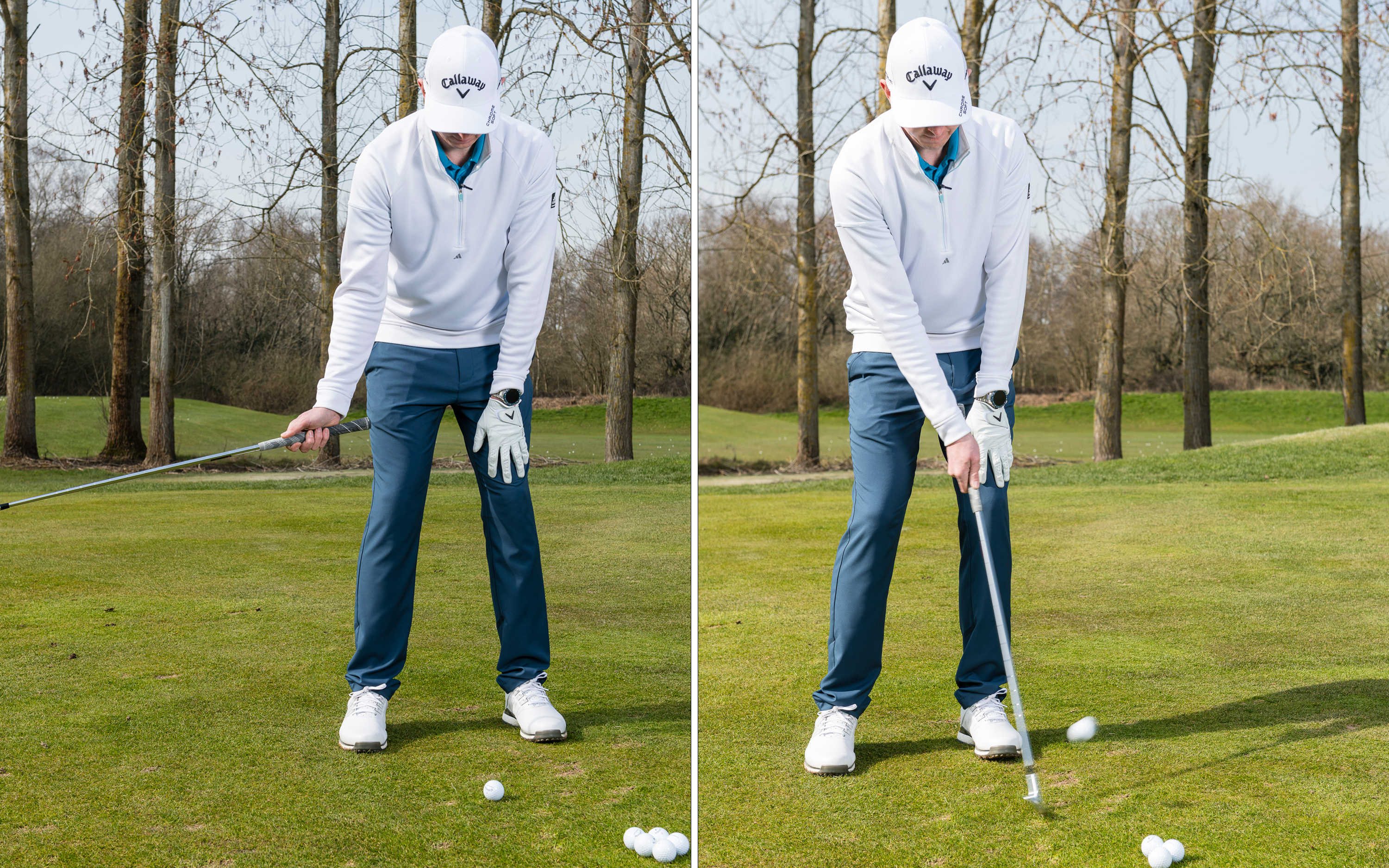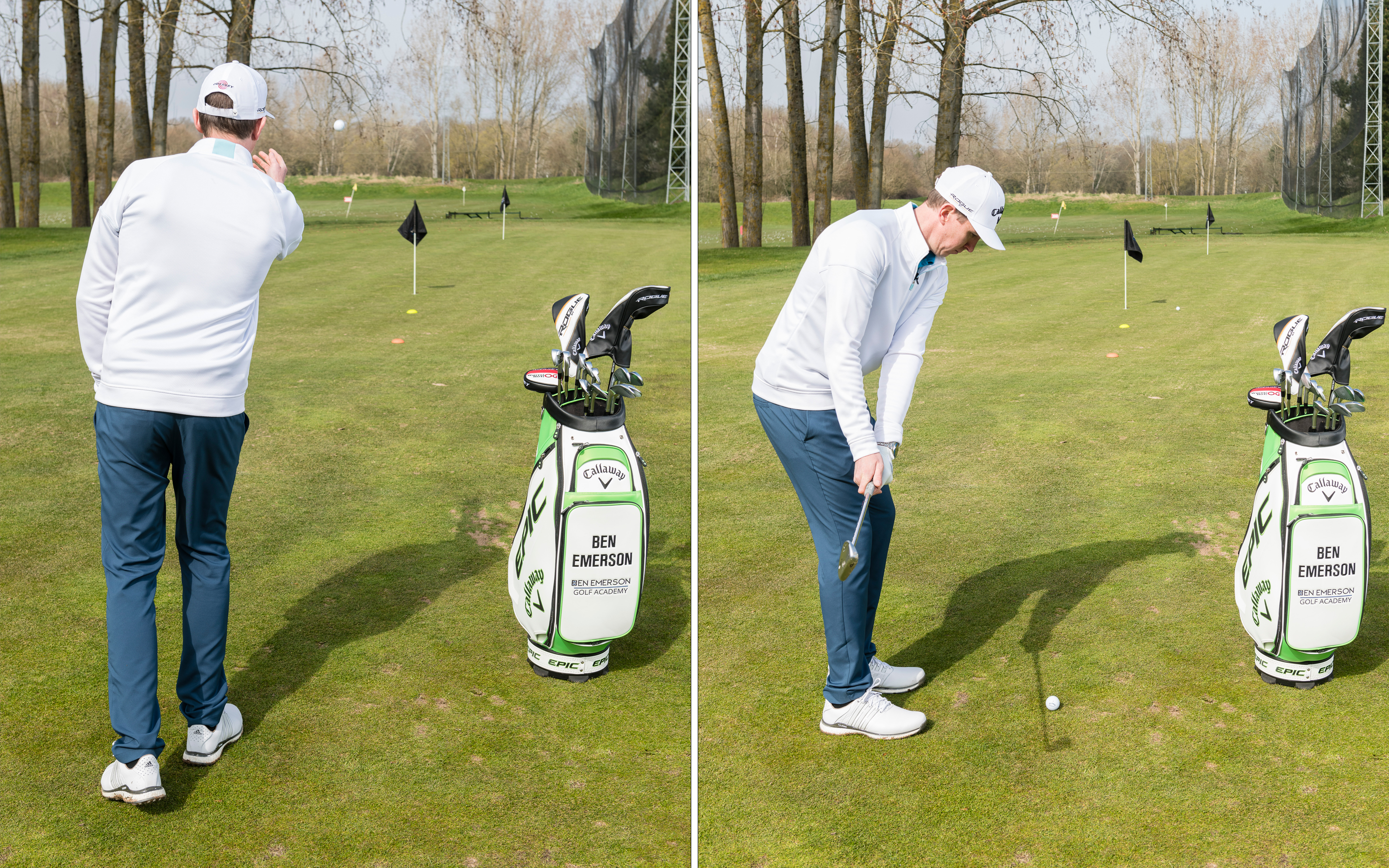4 Chipping Drills To Improve Your Feel and Technique
PGA pro Ben Emerson shares four chipping drills to help you get up and down more often


Golf Monthly created this content as part of a paid partnership with Callaway. The contents of this article are entirely independent and solely reflect the editorial opinion of Golf Monthly.
4 Chipping Drills Guaranteed To Lower Your Scores
Having a reliable short game is a sure-fire route to lower scores. However, for some, finding an effective chipping action can be a real source of pain. So, in the video and article below, PGA pro and Golf Monthly Top 50 Coach Ben Emerson shares 4 chipping drills that will help you save crucial shots around the green...
One-handed drill
If you’re one of those golfers who is desperate to finally learn how to chip in golf, here is a great drill to help you develop a better release pattern, which will lead to greater consistency.
When talking about these kinds of short shots, I normally see two common faults. The first one relates to the wrists. A lot of you will have been told at some point that you don’t want to use the wrists too much when chipping. So what tends to happen is people get very wooden in the arms and upper body and that causes some to hold the club off through impact. This is what’s called a block release and is to be avoided.
Alternatively, the opposite can happen if you use the wrists too much. Many golfers are guilty of an early release, where the club bottoms way before the ball. Even with the best wedges on that market that's going to lead to a succession of thins and duffs.

A block release (left) and an early release (right) are two common issues that plague golfers when it comes to chipping
If either of these scenarios sounds familiar, try removing your lead hand and placing it on your thigh. Grip the club as you normally would with your trail hand, without too much pressure, and make some short swings. When you've taken the club back, feel like gravity takes over to just drop it naturally onto the ball through the hitting zone.

This drill will help you ingrain a much better release pattern when chipping
Do this without a ball and work on just brushing the grass, before bringing a ball into the equation. You’ll notice the release pattern is different as you’re using the bounce of the club properly. This will also help you figure out how to spin the golf ball.
Subscribe to the Golf Monthly newsletter to stay up to date with all the latest tour news, equipment news, reviews, head-to-heads and buyer’s guides from our team of experienced experts.
Transitioning into a two-handed technique, grip the club lightly with the lead hand and try to recreate the feeling of letting the club drop naturally through impact and pass the body.
Darts
The next drill is a game called ‘darts’. Very simply, take six balls and throw them around the green at random positions, without changing the lie you end up in. The reason this game works is because it introduces an element of pressure into your short game practice routine.

Introducing an element of pressure to your practice is a great way to make changes
You’re only allowed to do this once per practice session so it resembles the type of pressure experienced on the course in trying to achieve the best score possible without a redo.
Either set up a four-foot circle around a hole or imagine one in your head. All you then have to do is try to chip as many balls into the circle as possible from the random locations around the green. Once you set a personal best, the goal is to keep trying to break or match it.
Accelerate through the shot
One of the most common faults when it comes to chipping is that golfers decelerate through impact. This makes it hard to strike the ball consistently well, which is vital for building confidence and saving shots.
The reason this happens is because golfers, especially higher-handicappers, take the club too far back for such a short shot. Our brains are great at working out what’s going on so it realises this and causes the club to lose speed approaching impact. Really good chippers do the opposite of this, which is why they know exactly how to open the club face in golf without sacrificing strike.
A great drill to practise is simply to work on shortening your backswing and accelerating through the shot. Be careful not to over exaggerate this as it can lead to a stabbing motion, so don’t forget about the importance of maintaining a nice tempo.
Develop your feel
The final drill involves four balls and will help you figure out how to choose the right club based on the shot you're facing. Place two markers - you can use balls or headcovers - on the green, with one close to the hole and one a bit further away.
Take the first ball and throw it towards the first marker, really thinking about the flight that’s required to get it close to the hole. Once you’ve done that, grab a club and try to copy that exact same flight and release.

For this drill, set out two markers and recreate the flight as if you were throwing a ball towards the target
Next, throw another ball but this time try to land it near the second marker with plenty of height so it stops close to the hole. With the final ball, again try and recreate the flight with the wedge you think is most appropriate. It’ll be tricky at first, but if you try this drill from loads of different distances and lies, you’ll improve your chipping feel, which will have a massive impact on your game.
Gear Check
The final point here is about your equipment. When it comes to anything short game related, a good feel for how hard to hit the ball is essential. One, often overlooked, element in the equation here is your golf ball choice. The advice here would be to practice with the same model you play. If you practice with distance golf balls but peg up premium golf balls in competition, your distance control is likely to be slightly off. Take care over this one simple element and it really should help.

Location: Sand Martins GC
Ben’s modern approach to golf coaching has seen him become one of the most sought-after coaches in the country and teaches none other than Robbie Williams. His honest, modern and fun style of coaching has help thousands of golfers of all ages and abilities and he has been coaching for over 20 years.
Advice for practice:
Start with slow, small swings. If you can’t do it small and slowly there is not a hope in hell of doing it at full speed with a full swing! In other sports such as rugby or martial arts they slow learn new moves/plays before making them at full speed.
Teaching philosophy:
‘Why guess when you can access’ Ever new student goes through a full TPI movement screen, 3D motion capture and pressure plate analysis as well as TrackMan and 2D video analysis. Coaching is based on facts and not guess work.
Most common problem:
A lack of clubface understanding and awareness. I get golfers to aim the clubface directly at the target and get them to make a slow swings and deliver the club to the ball with an open face, then repeat the same thing again but with a closed face, followed by one at the target. Giving them full awareness based on feelings errors to find a happy middle ground.